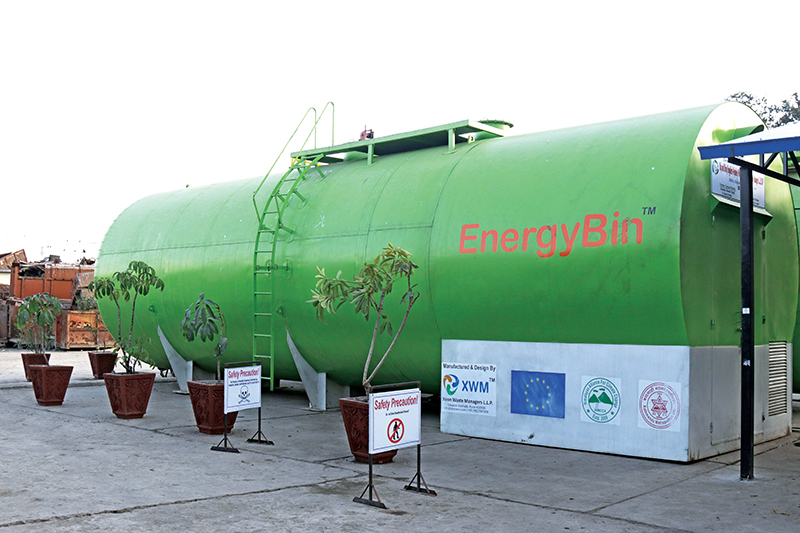Lalitpur, Nepal - Nepal’s burgeoning cities face a growing waste management crisis, with urban centers like Kathmandu Valley generating over 1,000 metric tons of waste daily. Amidst this challenge lies an untapped opportunity: waste-to-energy (WTE). By converting organic waste into renewable energy, Nepal can address both its waste woes and energy demands. Experts see WTE as a promising solution, but can the nation overcome the hurdles to realize this vision?
Photo Source: THT
The Promise of Waste-to-Energy
Waste-to-energy technologies are not new to Nepal. For decades, rural households have relied on biogas plants to transform organic waste and animal dung into fuel for cooking and lighting. However, urban WTE projects are now gaining traction. In Kathmandu, for example, pilot projects like the Sisdol Biogas Plant are paving the way for large-scale waste transformation. By converting organic waste into biogas and compost, these initiatives demonstrate how urban waste can be harnessed for sustainable development.
Private enterprises are also stepping up. Companies like Green Ventures are pioneering WTE projects that integrate renewable energy and circular economy principles. Beyond biogas, incineration of non-recyclable waste to generate heat and electricity holds potential, though still in its infancy.
The Challenges on the Road to Sustainability
Despite the optimism, Nepal’s WTE ambitions face significant hurdles:
Waste Segregation: A lack of systematic segregation at the source complicates the processing of waste for energy production.
Infrastructure Gaps: Nepal lacks the advanced technology and facilities required for large-scale WTE operations.
Financial Barriers: The high cost of WTE infrastructure deters private investment.
Policy Frameworks: While the government recognizes WTE’s potential, policies and incentives for the sector remain underdeveloped.
A Path Forward
The government’s commitment to sustainable waste management, as outlined in the Solid Waste Management Act of 2011, and renewable energy subsidies are encouraging signs. However, experts argue that Nepal must go further by:
Promoting Public-Private Partnerships: Leveraging private sector innovation with government support.
Raising Public Awareness: Encouraging citizens to segregate waste at the source.
Investing in Advanced Technologies: Enhancing efficiency and scalability of WTE systems.
Why It Matters
Nepal’s energy needs are rising, with the country still heavily reliant on imported fossil fuels. Waste-to-energy could not only reduce this dependence but also mitigate the environmental and health hazards posed by unmanaged waste. Experts estimate that tapping into Kathmandu Valley’s waste alone could significantly contribute to the energy grid while reducing the volume of waste sent to overflowing landfill sites.
Conclusion
Nepal stands at a crossroads. Waste-to-energy offers a pathway to transform its urban waste crisis into an opportunity for sustainable growth. With concerted efforts from the government, private sector, and citizens, this vision could become a reality. As the country grapples with its waste management challenges, the question remains: Can Nepal turn its trash into a treasure trove of energy?